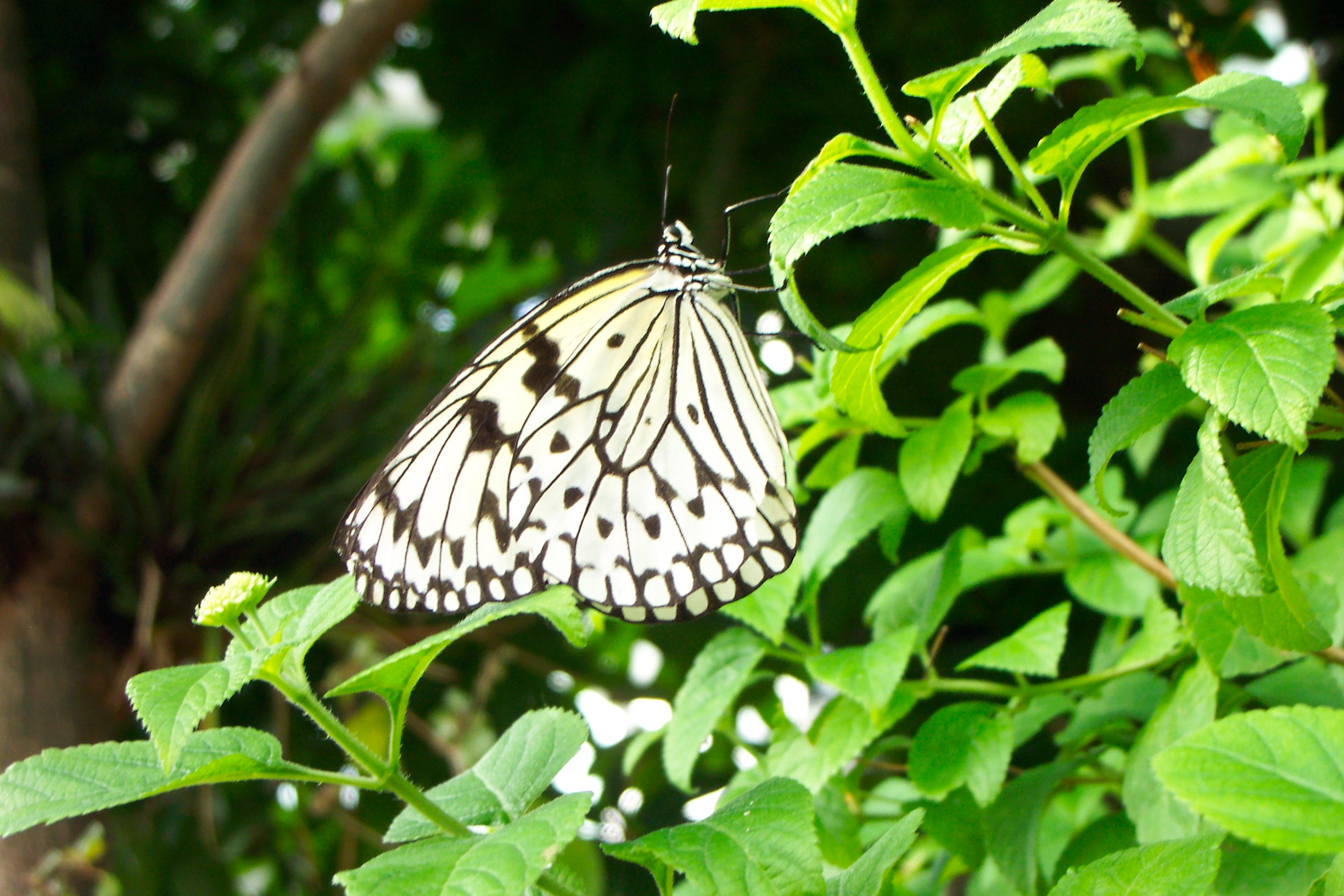- Idea malabarica
Taxobox
name = Malabar Tree Nymph
status = LR/nt | status_system = IUCN2.3
status_ref = [IUCN2006|assessors=Lepidoptera Specialist Group|year=1996|id=10783|title=Idea malabarica|downloaded=11 May 2006]

image_width = 220 px
regnum =Animal ia
phylum =Arthropod a
classis =Insect a
ordo =Lepidoptera
superfamilia =Papilionoidea
familia =Nymphalidae
subfamilia =Danainae
genus = "Idea"
species = "I. malabarica"
binomial = "Idea malabarica"
binomial_authority = Moore, 1877
synonyms = "Hestia malabarica"The Malabar Tree Nymph ("Idea malabarica") is a large
butterfly found in peninsularIndia that belongs to the danaid group of the familyNymphalidae . It is found in forest clearings and above the forest canopy.Description
The Malabar Tree Nymph has a wingspan of 120-154 mm. It appears as a mostly white butterfly with black markings. Upperside semitransparent white, sometimes slightly infuscate with a powdering of black scales. Forewing with the following black marks:— narrow margins on both sides of the veins, a dusky streak along dorsum, large sub-basal spots in interspaces 1 and 2 (produced inwardly in former), a large oval spot crossing three streaks in discoidal cell, a spot above it in interspace 11, a broad margin to the discocellulars and three rows of spots on outer half of wing, the discal series outwardly conical and curved sharply inwards opposite apex, the subterminal series in pairs coalescent on the veins, the terminal series elongate on veins and in interspaces; costa with a black streak at base, beyond black and white alternately. Hindwing with similar markings; cell with two streaks, the upper forked towards apex; costa white, two spots not touching the vein below in interspace 8; paired spots on veins 5, 8 and 7 not coalescent but one behind the other, black. Underside similar. Antennae black; head and thorax streaked and spotted with black ; abdomen white, with broad dusky black streak above.Bingham, C.T. (1905) Fauna of British India. Butterflies. Vol. 1.]
A variety "kanarensis", Moore, has been noted to be identical in markings but always smaller. It was recorded from the Konkan and North Kanara but is most likely.
Range
Within India, the species is found in
South India especially in theWestern Ghats .Habits
Their flight is slow, weak and fluttery. They glide a lot giving members of this genus the other name of Paperkite. Often gliding above the tree canopy but every now and then moving lower down in forest openings. They are unpalatable like other members of the "Danainae".
Food plant
The larvae are known to feed on plants of the species "Aganosma cymosa" (
Apocynaceae ).Gaden S. Robinson, Phillip R. Ackery, Ian J. Kitching, George W. Beccaloni AND Luis M. Hernández HOSTS - a Database of the World's Lepidopteran Hostplants [http://www.nhm.ac.uk/research-curation/projects/hostplants/] Accessed October 2006] ] Another species of Apocynaceae, "Parsonia spiralis" has also been noted as a larval host plant and it is believed that many more species in the family may be discovered. [Susanth, C. 2005 "Parsonia spiralis" new larval host plant of endemic butterfly Malabar Tree Nymph "Idea malabarica" Moore. Journal of the Bombay Natural History Society 102(3):354-355]Cited references
Other sources
* Evans, W.H. (1932) The Identification of Indian Butterflies. (2nd Ed), Bombay Natural History Society, Mumbai, India
* Wynter-Blyth, M.A. (1957) Butterflies of the Indian Region, Bombay Natural History Society, Mumbai, India.ee also
*
Danainae
*Nymphalidae
*List of butterflies of India
*List of butterflies of India (Nymphalidae) External links
* [http://ftp.funet.fi/index/Tree_of_life/insecta/lepidoptera/ditrysia/papilionoidea/nymphalidae/danainae/idea/index.html Summary of the genus "Idea"]
Wikimedia Foundation. 2010.
